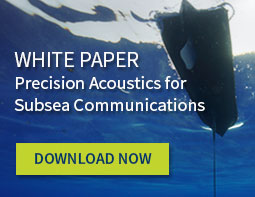Sounds in the Sea
Liquid Robotics — May 23, 2017
I’ve always been interested in business ethics. So, when I considered Liquid Robotics’ offer of employment, my first order of business was to figure out what the company was doing, and why, and whether it was a mission I could get behind. What was the Wave Glider? It was an ocean robot that harvested the power of the sun and waves to do what usually required either a large anchor or an oil-fueled engine. I was envisioning something small and simple when I heard the word robot; I soon found out that they are large and complex because they are computers on the ocean, but also elegantly simple in how they harness the power of the waves. It seems to me a rare thing when something simple, like the underwater wing of the Wave Glider, allows for previously nonexistent, safer methods to explore a significant part of the Earth’s surface. Specifically, one of the least hospitable: the open ocean.
I didn’t know this as well when I started, but working in the ocean comes with problems. There are unnecessary deaths in the ocean – from unsafe sea states, including conditions unknown to most mortals: few are risky enough to operate a boat in a Sea State 6 with 5m waves. There’s also lots of noise in the ocean, and it’s doubling every decade. That noise has caused problems with fish and sea mammal breeding, whale to whale communication, invertebrate reproduction, and more.
I’m not an ocean expert, in fact I’ve mostly made my career in supporting tech companies. But even before I started working at Liquid Robotics, I knew that boat noise helped to make a species of blind river dolphin extinct in China, and I knew that whales used the oceans for long distance communication.
So I was excited when I saw and heard Wave Gliders operating in the water. They don’t make all that propeller and mechanical noise. Fish actually like them. Seals take refuge on them. Not to mention, they’re able to go places where humans on a ship would be at risk of injury or death. They produce no fuel or exhaust – they cleanly and greenly harness the waves, harvesting energy from the sun and data from the environment, providing sensor arrays and processing data. And more promises of decreasing environmental impact are on the horizon, as companies explore the capabilities of the Wave Glider platform: for instance, perhaps a client of Liquid Robotics will find a way to use the new Vibroseis ocean survey process with Wave Gliders:
“A recent modelling study (Duncan et al., in prep.) comparing a realistic MV array with an airgun array with the same geophysical output found that the MV array was 13-22 dB lower (quieter) than the airgun array, even at a distance of 5 km, the furthest modelled range. This reduction in short-range peak levels could greatly reduce the number of animals exposed to noise likely to cause injury, to being only 1-20% of those exposed to injury from an airgun survey, by some estimates (LGL & MAI 2011).”
Since my initial ethical investigation, I have worked at Liquid Robotics for a year among dedicated people whose dream it is to see quiet, environmentally friendly Wave Gliders augment the capabilities of, and reduce the number of, comparatively noisy, dangerous boat-based missions. I’ve operated these vehicles to create scientific opportunities where research would otherwise be prohibitively expensive, in terms of dollars and lives risked. I have heard the whales while grasping the umbilical of a Wave Glider. As someone with a lasting interest in the ethics of technology and its impact on nature, I am confident that working with the Wave Glider is an enduring and ethically positive pursuit.
David Arnold works in operations at Liquid Robotics, and is an ardent ethicist interested in animal welfare since his days as a philosophy major at Stanford University.
Photo credit: Chris Forsythe
